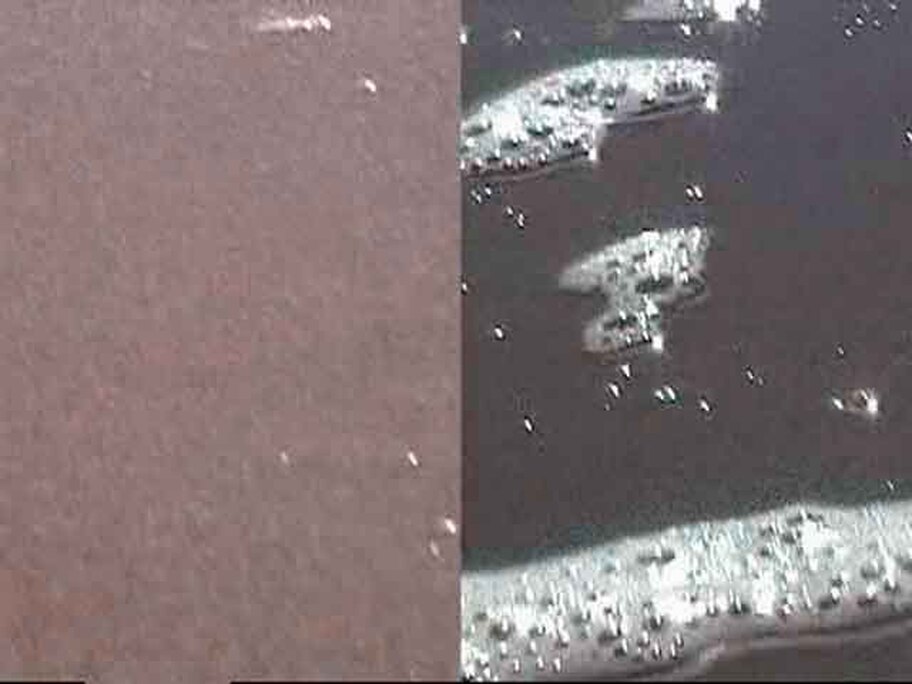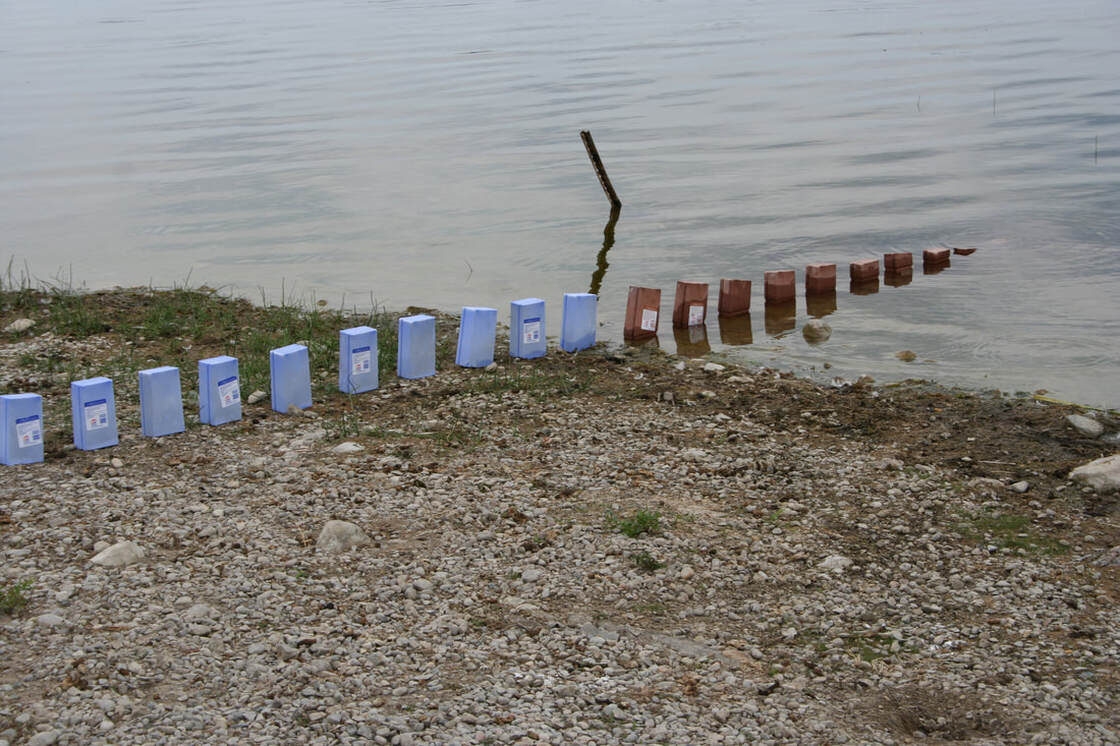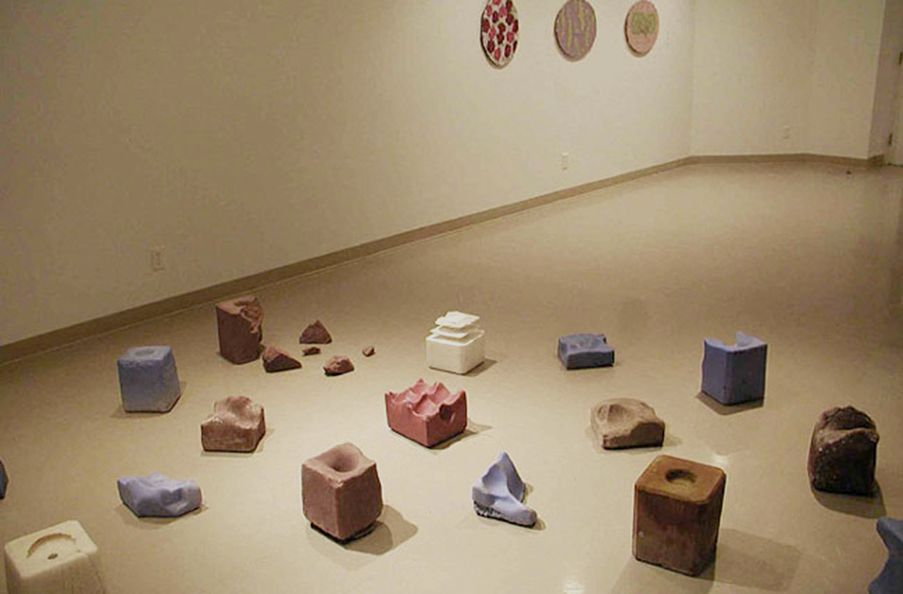|
LICKS 1999- 2004
Licks was exhibited in several galleries across Canada. The work is essentially about 'sharing the art-making process' and not being concerned with the authorship oor whom the artist is. The process took over a year to complete, and the workload was shared with horses, Atlantic waves and seasonal elements. CBC, ZED TV interview, the making of LICKS, 2003 |
Wavelicks, Atlantic high-tide, saltblocks, Confederation Center, PEI, 2003
|
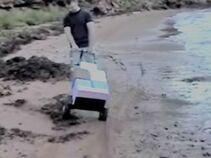
- Sodium Chloride (Na)- excess leads to hypertension or heart disease. Causes a loss of potassium to be lost in the urine. Aids in nerve and muscle functioning.
- Urine – waste material that is secreted by the kidney, is rich in end products of protein, metabolism together with salts and pigments, and forms a clear amber and usually slightly acid fluid in mammals.
- Potassium- works with sodium to regulate the body’s water balance /helps dispose of the body’s waste and assists in sending oxygen to the brain.
- Cobalt- a mineral which is part of B12, is essential for red blood cells / prevents anemia (too much can enlarge thyroid gland).
- Copper – converts the body’s iron to hemoglobin; aids in the pigmenting of hair and skin.
- Chromium (Cr)- is essential to balance bodily function, thought
- Chlorine (Ci) - regulates blood alkaline- aids in digestion; prevents loss of hair and teeth. Iodine – influences the thyroid, controls weight and mental reaction time, promotes growth. (Craving salt can indicate a thyroid iodine deficiency).
H20 – water- the major constituent of all living material.
Salt Licks in progress, 2000, 01
Salt Licks, 25 animal salt blocks, Layer Painting, University of Manitoba Arty Gallery, 2003
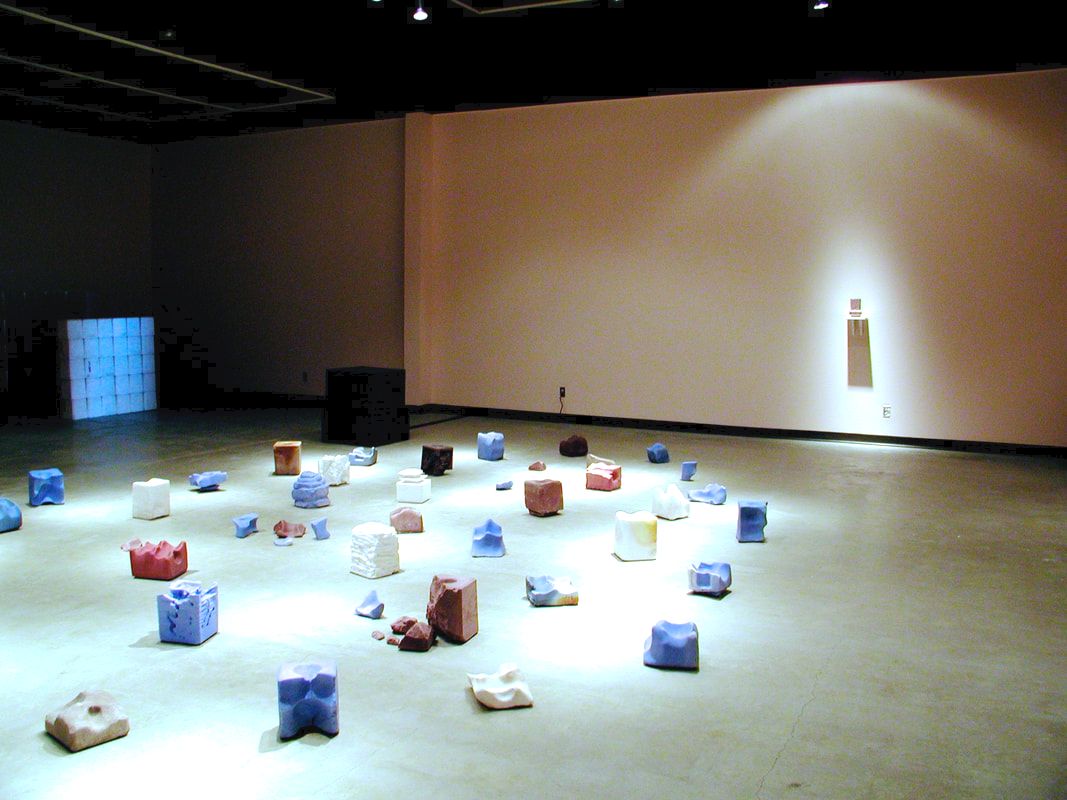
Salt Licks, Crystal Licks, Video installation, Art Gallery of Yorkton, Saskatewan, Can, 2004
Ocean Licked, video still, loop, 2003
Licks by Lake, earthwork, Maclaren Art Gallery, Ont. Can, 2004

Salt has been mined for a thousand years. Its relationship to the health of mankind is essential and historically, its relationship to world economics has been enormous. The Romans used it as currency for its soldiers and the Egyptians used it as an essential ingredient for embalming. Greeks used it to line ceramic containers that preserved food (and so invented edible olives). With out it, food of all kinds would not be sustainable. Countries have been won and lost over salt. My artistic interest in salt is not to trace its history (author Mark Kurlansky’s best-selling novel entitled Salt does it far better than I could).
The varied elements found in saltblocks for animals are akin to a multi-vitamin - in that they contain trace minerals. The blue licks contain cobalt, the brownish ones contain iron oxide, others are trace mineral. White saltlicks are stand-alone salts.
What I am able to achieve in working with saltlicks is integrate the history of salt with a type of entropic approach of sculpture making. The methods range from animals (licking), the erosion achieved through weather; I’ve used lakes and the Atlantic ocean (tide, water-dissolving), as well as ‘humans’ (gunfire, hydrochloric acid, pressure washer) that allow natural process in a collaborative manner.
The medium of salt contains histories and various types of erosion create an exchange of natural resources (via licking, tides, etc.) between the land, the sea and between animals (humanity). Deficiencies in salt are critical, in most every way.








